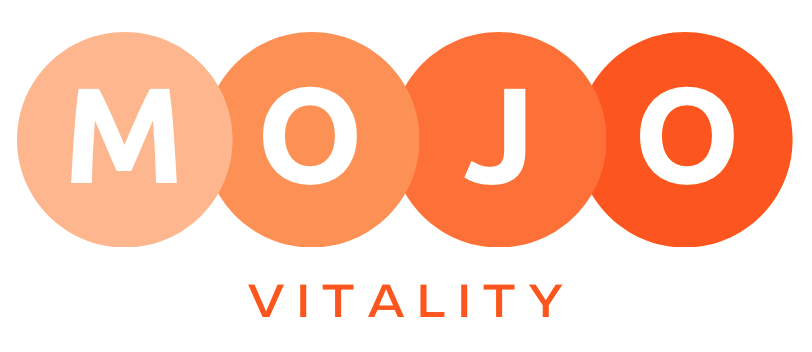
Men’s Hormone Restoration
The Steps to Increasing Testosterone
-
Book
Schedule an in-office consultation or a TeleHealth appointment with the doctor to learn more about our treatments and get your questions answered about testosterone.
-
Prep
Get your blood work done to check your hormone levels - either at a local lab or at the Mojo Vitality clinic.
-
Assess
After the results of the blood work are in, meet with our doctor in the clinic or via TeleHealth. We will discuss the results of your blood test and create a treatment plan curated to your goals.
-
Treat
Your treatment will be formulated and shipped directly to your doorstep. We will guide you on the best and easiest way to administer your treatments from home. If you prefer, you can come into the clinic for intramuscle injections. Pellet implants must be done in the clinic.
-
Optimize
Many men start feeling the benefits of TRT right away. Over time you will notice quality of life improvements that will continue to develop for years to come.
-
Maintain
Our experts at Mojo Vitality will monitor your progress through regular check-ins and occasional blood tests. Treatment adjustments may be necessary to maintain safety and good health. During this continued monitoring, you may find that Mojo Vitality has much more to offer than TRT.
Low T, or low testosterone effects men as early as age 25. Mojo Vitality has a depth of experience with hormone replacement therapy and hormone optimization therapy. This treatment has grown in popularity in the last decade for men and women. These imbalances or low levels need to be addressed early to preserve cognitive abilities, memory, bone density, hair and skin vitality, mood, libido, and exercise tolerance. Mojo Vitality provides different therapies best fit for the patient.
Types of Testosterone Replacement Therapy (TRT)
-

Hormone Pellet Therapy
Pellet therapy has gained the most popularity over the last decade as it has the benefit of continued release into the bloodstream without surges and dips. This prevents overproduction of red blood cells and reduction of diseases associated with aging. The pellets are about the size of a grain of rice and are inserted in the upper buttocks by a provider in the office taking less than 10 minutes and repeated every 4 to 6 months. With pellets, there are no prescriptions or reminders of when to administer medications. Mojo Vitality uses pellets with Bioidentical hormones, closely replicating the molecular structure of hormones that normally occur in the body.
-

Intramuscular Injection
Most common because of its lower cost, this medication can also be sent to your home address for self-administration, or you can come into the clinic for a quick visit and have it injected. An intramuscular injection (IM injection) is a technique used to deliver a medication deep into the muscles. This allows for better absorption with slow release into the over 1 to 2 weeks.
-

Topical Therapy
This medication comes in a gel or a cream and is administered daily to the skin. This does have the benefit of a more constant administration level within the bloodstream superior to intramuscular therapy. This can be direct shipped to your home address. It is usually applied to the shoulders, upper arms, or abdomen. Topical testosterone is a safe and effective way to treat low testosterone levels. It is generally well-tolerated, with few side effects.
